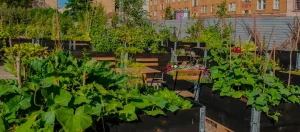Sustainable Travel Practices for Eco-Conscious Tourists: Your Guide to Treading Lightly

Let’s be honest. We all love to travel. The thrill of new places, the taste of unfamiliar food, the sheer joy of disconnecting… it’s magic. But for a long time, that magic came with a hidden cost—a heavy footprint on the very places we adored.
Well, that’s changing. More of us are waking up, wanting our adventures to be part of the solution, not the problem. Sustainable travel isn’t about giving up the joy of exploration. It’s about shifting our mindset. It’s about traveling deeper, not just farther. Let’s dive into how you can make it happen.
Before You Even Pack Your Bags: The Mindful Planning Stage
Believe it or not, the most impactful choices happen before you leave home. This is where you set the tone for your entire trip.
Choosing Your Destination and Transportation
Flying is, well, the big one in terms of carbon emissions. So here’s the deal: for shorter distances, can you take a train or a bus? The journey becomes part of the adventure, offering scenic views you’d miss at 30,000 feet.
If you must fly, think about a non-stop flight. Take-offs and landings use the most fuel, so a direct route is often better. And when picking a destination, consider emerging eco-tourism hotspots that are managing tourism thoughtfully, or even places closer to home you’ve overlooked.
Picking Your Home Away From Home
Where you stay matters immensely. Look for accommodations with legitimate green certifications—not just a “we recycle” sticker on the front desk. Dig a little. Do they have solar panels? A water recycling system? Do they source food locally?
Smaller, locally-owned lodges, B&Bs, or homestays often pour more money back into the community than big international chains. It’s a more authentic experience, too. You’re not just a room number; you’re a guest.
On the Ground: How to Be a Conscious Traveler
You’ve arrived. Now what? This is where your daily choices paint the picture of your impact.
Embrace the Slow Travel Philosophy
Rushing from one Instagram-famous spot to another is exhausting—for you and the destination. Slow travel is the antidote. Spend a week in one town instead of three days in three cities. You’ll connect with local shopkeepers, learn the rhythm of the place, and reduce your internal—and external—combustion.
Your Daily Habits, Amplified
The simple stuff you do at home? It’s even more critical here.
- Reusables are non-negotiable. A water bottle, a coffee cup, a shopping bag. In many places, you can find water refill stations to avoid plastic bottles.
- Shorter showers. Water is a precious resource in many tourist destinations.
- Turn it all off. Lights, A/C, electronics when you leave your room. Just like you would at home.
- Walk, bike, or use public transport. It’s cheaper, more immersive, and your carbon footprint plummets.
Support the Real Local Economy
This is a big one. Eat at a family-run restaurant instead of a global fast-food chain. Hire a local guide who can share stories you won’t find in any guidebook. Buy souvenirs from artisans, not from a factory on the other side of the world.
That money circulates. It sends a kid to school, it keeps a craft alive. It tells the community that their culture is valuable.
Navigating the Tricky Stuff: Wildlife and Waste
Okay, let’s talk about two areas where intentions can sometimes go awry.
Wildlife Tourism Done Right
As a rule of thumb: if you can ride it, hold it, or take a selfie with it, it’s probably not ethical. True ethical wildlife encounters are about observation from a respectful distance. Look for legitimate sanctuaries and rehabilitation centers that prioritize animal welfare over visitor entertainment. Your presence should not disrupt their natural behavior.
The Invisible Problem: Your Waste
Even if you throw something away, it doesn’t just disappear. Many destinations, especially islands, have overwhelmed waste systems.
| Do This… | Not That… |
| Pack a reusable tote for shopping | Accept plastic bags for every purchase |
| Use a bar of shampoo & conditioner | Use the hotel’s single-use plastic bottles |
| Carry your own utensils | Use disposable plastic cutlery from street vendors |
| Choose products with minimal packaging | Buy travel-sized everything |
The Ripple Effect: It’s Bigger Than Just One Trip
Sustainable travel practices for eco-conscious tourists aren’t just a checklist. They’re a philosophy. It’s understanding that we are temporary visitors in a place that is someone else’s home. It’s about leaving a place so that the person who comes after you can have the same, or even better, magical experience.
And honestly? It feels better. There’s a profound satisfaction that comes from knowing your journey supported a local family, protected a patch of forest, or simply didn’t add to a growing landfill. That’s a souvenir no one can sell you, but one you get to keep forever.
So go. Explore this incredible world. But remember to walk softly, listen closely, and connect deeply. The future of travel depends on it.








